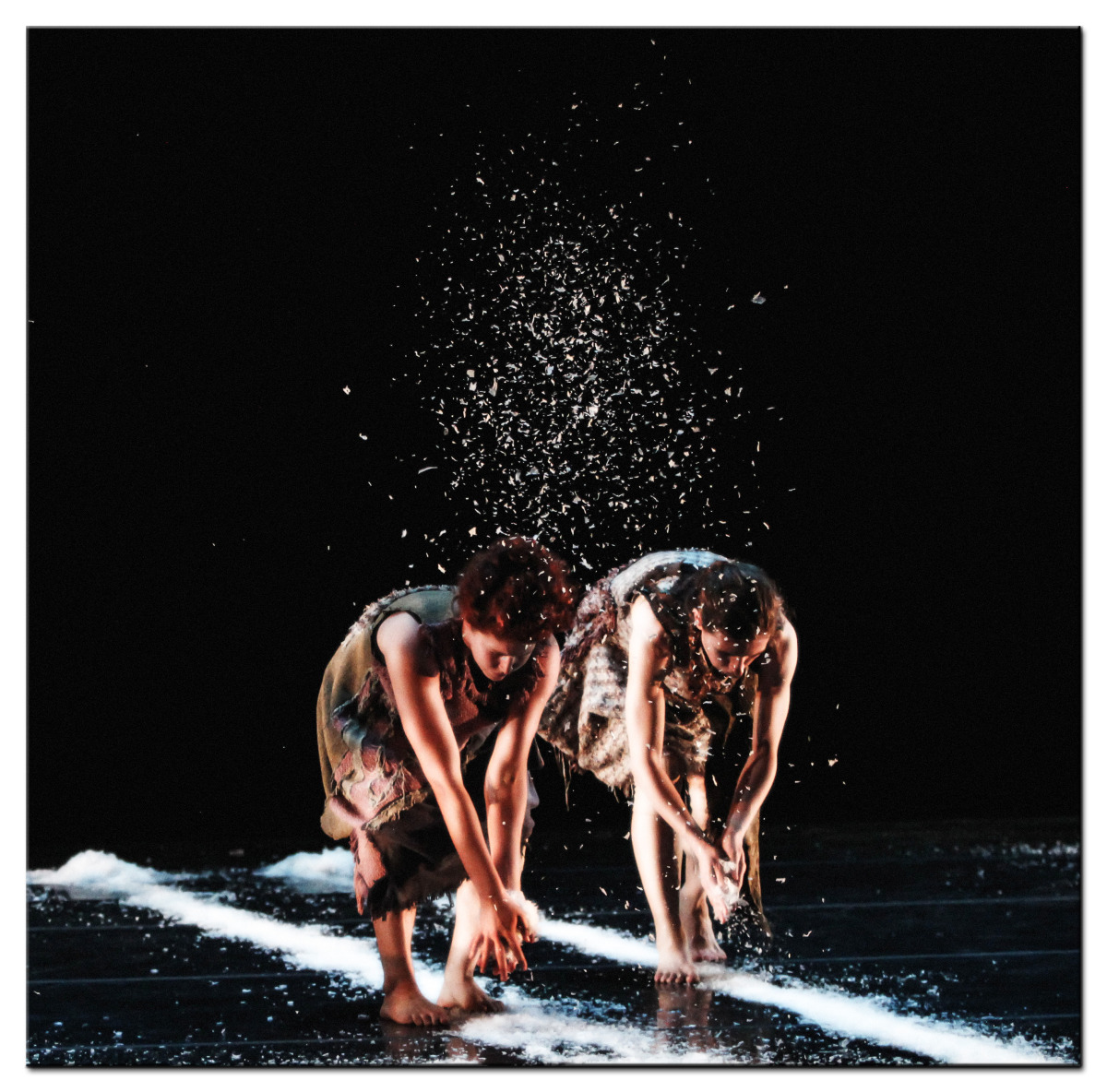All Dance is Local Somewhere
Plenty of elements distinguish a thriving dance scene from one in which the occasional dance gets made: funding, available space, good schools, an active demimonde. But a local language, a conversation to join—that might be the most important.

On a recent Wednesday evening, the American Dance Festival hosted an hour of Durham dance under the heading Here and Now: NC Dances. This is only the second year ADF has extended this courtesy to the locals, and the show (at Duke’s Reynolds Industries Theater) had a decidedly midweek feel, with concert-goers in shorts. On my way down the stairs, I passed two young men, dance students from ADF’s summer program, one of whom was muttering “Hashtag hashtag” as if he had utterly run out of content for the day. He was worried, probably. I think we all were, locals and outsiders alike, as if we were meeting each other’s families for the first time: what will it be, how will it go over, what will we think of each other?
As it turned out, we needn’t have worried. The concert was snappy, brief, run on a tight schedule. The work didn’t slay anyone, but it didn’t embarrass either. The four North Carolina choreographers—Gaspard Louis, Leah Wilks, Diego Carrasco Schoch, and Renay Aumiller—directed people smartly around stage; the NC dancers moved with finesse and confidence. ADF students have the right to judge dance performances harshly, but they don’t; they applaud vociferously (whether out of a spontaneous overflow of youthfulness or out of empathy, I can’t tell). In summary, everyone went home happy and maybe a trace relieved.
But what did we learn? I imagine few of the students aspire to become locals; they come to ADF because they want to join the upper echelons of dance, the international companies that wow them with power and glamour. But all dance companies must be local somewhere if they are not to become simply engines of spectacle. And when you are at home, the standards are different.
Local companies are held to less exacting physical measures, to begin with. Out-of-towners generally cost more and thus are expected to bring more wow. When a guy barrel-rolled through the air at Vertigo’s opening night performance, executing a move that most people in the audience could not even attempt, I detected a palpable relief: here was something we could say we had seen. Beyond the tricks they expect from travelers, though, most audience members aren’t that critical. I often forget how much most people enjoy live dance, particularly if they can see that effort is exerted. Do I sound sarcastic? I don’t mean it that way. People are kind. They appreciate the sweat of their compatriots. Besides, if your audience really knows you, if they see you at the grocery store or look after your kids at daycare, they know what you’re going through. They know you’re not 25, they know you’re recovering from a car accident or a hard divorce. In short, they know you’re a person, and they’re amazed that a person can do these things, can fly, spin, trust.
Physical virtuosity aside, though, you can’t fake out the locals. On tour, you can be promising for years, but at home you have to deliver on your promises. I’ve seen dancers teeter on the edge of revelation until that expectant gaze, that just-opened mouth, became a stock pose; I’ve seen choreographers mistake their strengths; I’ve seen almost turn into never. On the other hand, I’ve seen people grow up on stage, I’ve seen dancers do what no one thought they could; I’ve seen choreographers find their groove and lose their fear. And it all meant so much more to me than anything I saw strangers do, however wonderful, because I knew the soil it grew from.
______________________________________________________
Plenty of practical elements distinguish a thriving dance scene from one in which the occasional dance gets made. But a local language, a conversation to join—that might be the most important.
______________________________________________________
That soil—weather, history, landscape, gossip, architecture—must figure in a local performance. Without it, you’ve got one person talking to herself in a blank room; with it, you have work. Plenty of elements distinguish a thriving dance scene from one in which the occasional dance gets made: funding, available space, good schools, an active demimonde. But a local language, a conversation to join—that might be the most important.
So how does Durham fare? Well, I’m biased, and involved, because I’m a local myself now. But I think we might be finding our way towards a conversation. All the pieces in this concert share a spiritual inclination; they all stretch towards an upstage corner, creating a very different feel from, for example, the frieze-like frontality of much Minneapolis dance. Losing, seeking, finding: when the two men in Schoch’s duet lift each other, the lifted one is nearly always looking off into the wings, elsewhere. Other than this common yearning, it’s hard to tell whether the shared elements—modern technique, oblique content—reflect a distinctive dance culture or an American default. Time will tell. In the meantime, Aumiller’s Acquiring Dawn, with its snow drifting down on a dirty Durham summer, left me with a sense of shift, unfinished but building. Ordinary revolution: that is local dance.
______________________________________________________
Related links and information:
American Dance Festival, based in Durham, North Carolina, presents six-and-a-half weeks of performances and residencies by major established companies and emerging artists from around the world from June 12 through July 26, 2014. ADF also offers a six-week professional school for dancers, choreographers and teachers as well as various national and international conferences and workshops and year-round community outreach in the Durham area.
youtube://v/gFYVkhrvBv4
Lightsey Darst is a writer, critic, and teacher based in Durham, NC.